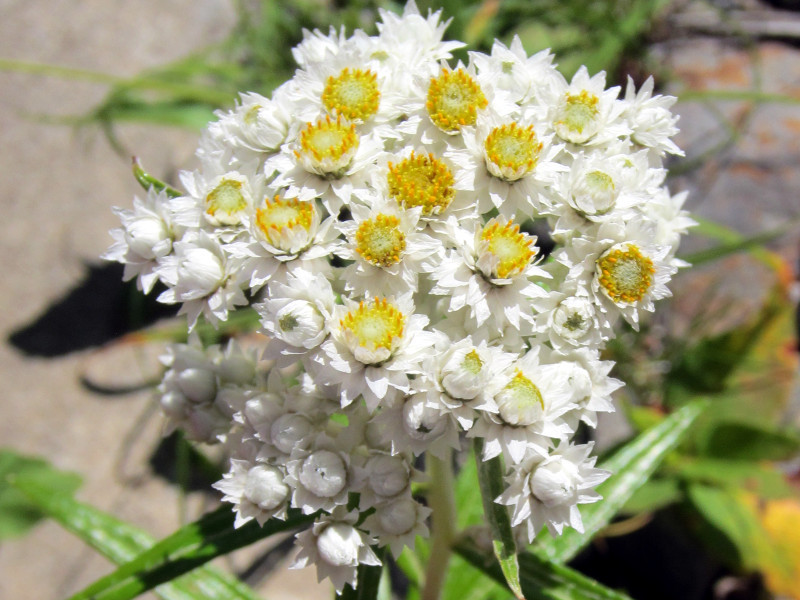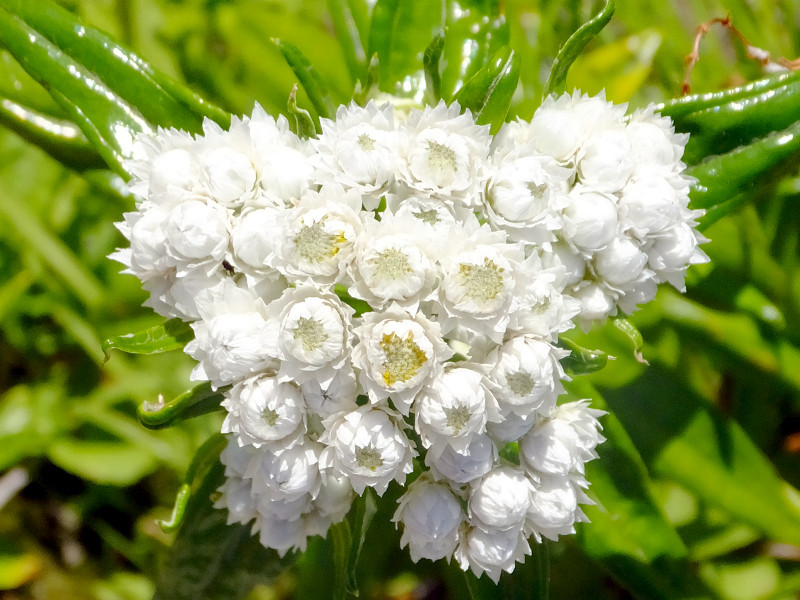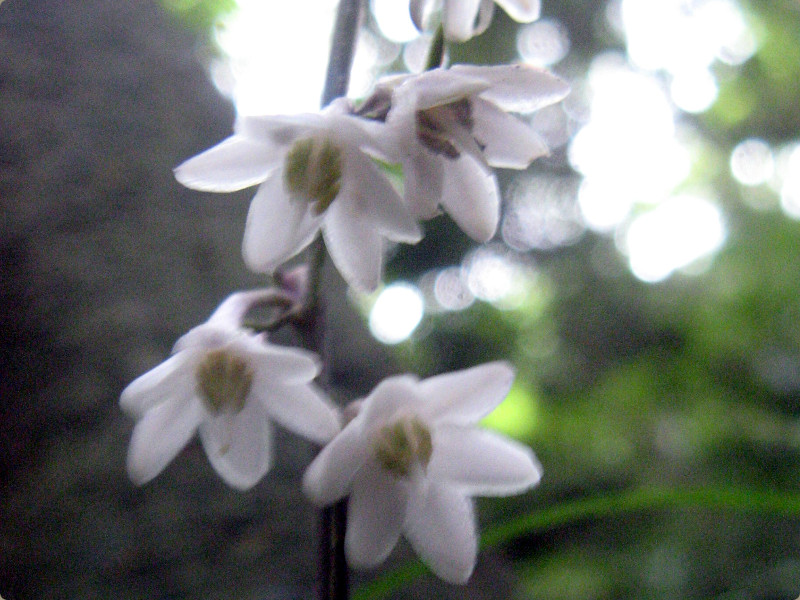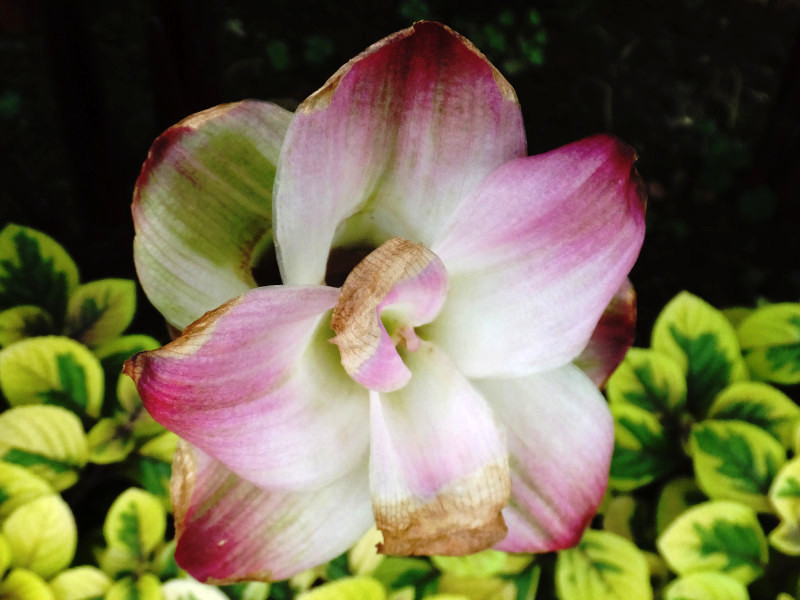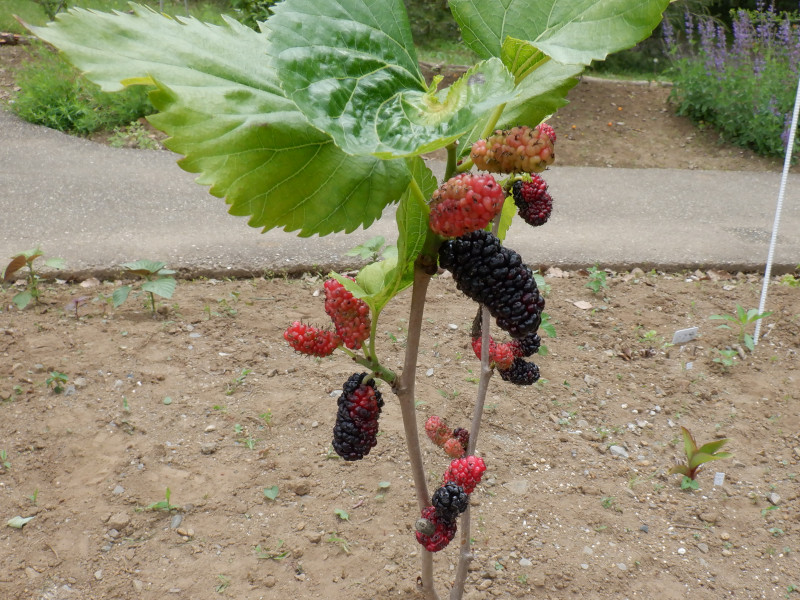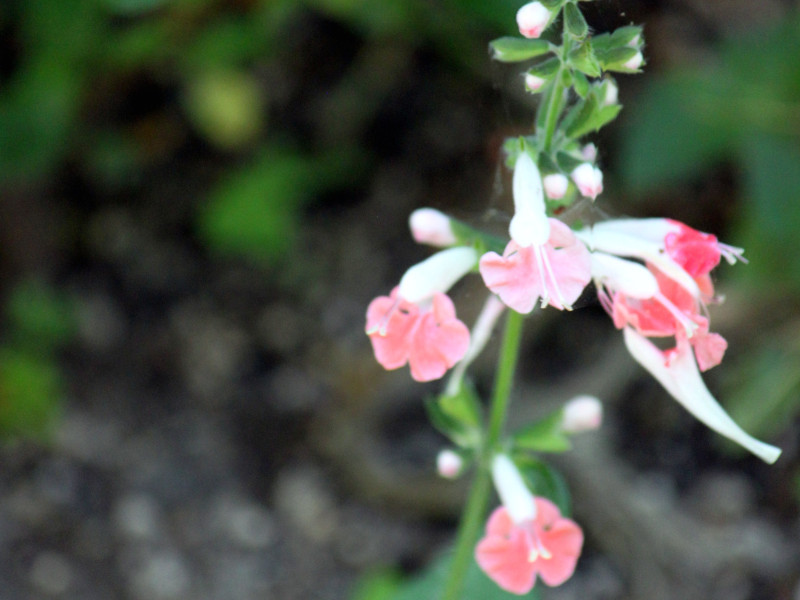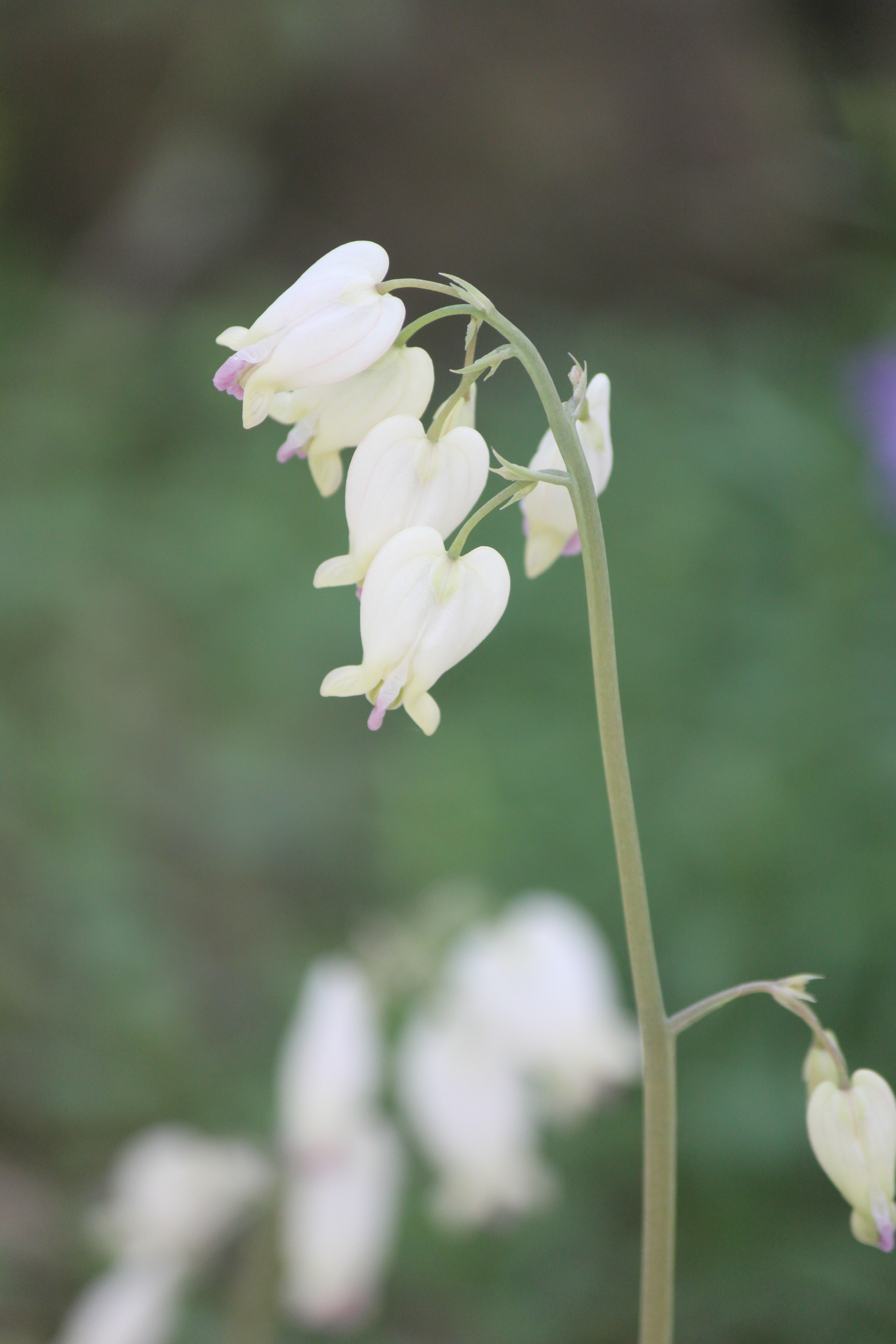Anahalis margaritacea
- Flower nameAnahalis margaritacea
- Scientific nameAnaphalis margaritacea
- AliasAleutian avens, 山母子
- Place of originJapan, China, and North America
- Place of floweringHigh mountain, Low mountains, Sub-alpine
- Flowering seasonJuly, August, September
What is Anahalis margaritacea
Anahalis margaritacea (scientific name: Anahalis margaritacea) is an alpine perennial in the family Asteraceae native to Japan, China, and North America. It grows on the alpine meadows north of Hokkaido to central Honshu. Flowers are dioecious. There are no saw teeth on the leaves and the whole edge. From late summer to autumn, the flower inflorescence is extended from the tip of the stem, and a yellow flower blooms in the center of the total bract, which looks like a white flower. The leaves are elongated lanceolate and have three distinct veins.
The leaves are green, but they grow whitish and look whitish.
Generic name:Anahalis margaritacea,, Scientific name: Anaphalis margaritacea, Also known as: the western pearly everlasting, pearly everlasting, Yama hahako, Place of origin: Japan, China, and North America, habitat distribution: Hokkaido-northern Honshu, living environment: sub- and alpine grassland, Life type: perennial, tree height: 30-70 cm, dioecious, male head flower: tubular amphoteric flower, female plant corolla: filamentous flower, Leaf color: green, leaf shape: linear lanceolate, vein: three distinct veins, phylla: alternating, leaf margin: whole margin, petiole: non-radioactive flower, flower color: yellow, white flower like total bract, flowering period: July to September, breeding: rhizome.
